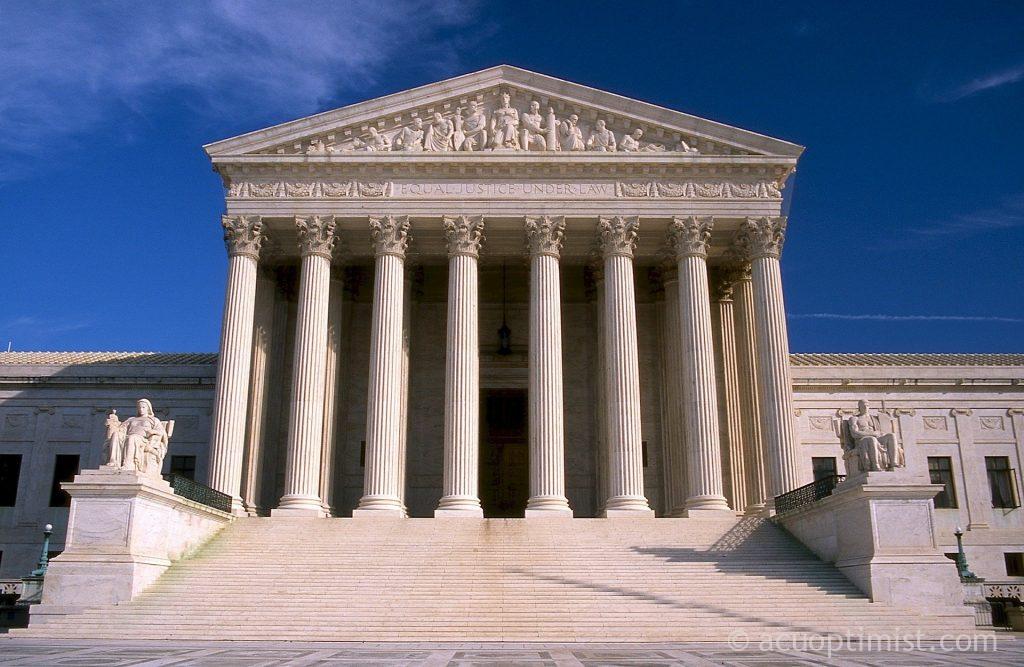[Opinion piece against a Supreme Court nomination]
In 2016, during President Barack Obama’s last year as president, Supreme Court Justice Antonin Scalia died, leaving a Supreme Court seat open.
Shortly after Scalia’s death, Senate Majority Leader Mitch McConnell declared that any nomination that Obama gave would be null and void and that the Senate should wait until the new president would be elected later in that year to fill the seat. The Senate majority leaders refused to conduct the hearings to go forward with Obama’s nomination, and it expired after eight months as the new president came in. (source: NPR)
Current President Donald Trump nominated Neil Gorsuch soon after he was inaugurated. The nomination passed through Congress that April.
If Obama’s nomination had gone through the Supreme Court, there would have been five Supreme Court justices nominated by Democratic presidents and four nominated by Republican presidents. Since his nomination was not confirmed and Trump was able to go through with his nomination within months of his induction, there were five justices nominated by Republican presidents and four nominated by Democratic presidents. (source: Senate.gov)
Following the passing of Ruth Bader Ginsburg, who is known for her twenty-seven years of service to the Supreme Court and remarkable strides as a woman in politics, America is asking the question, “Should the Senate confirm Trump’s nomination for her replacement, or should the Senate wait for the incoming president?”
If Congress goes through with Trump’s nomination to fill the empty seat, it will change to six justices nominated by Republican presidents and three nominated by Democratic presidents, tipping the scales in favor of the Republican party.
In addition, the nomination for Ruth Bader Ginsburg’s replacement could counteract everything RBG worked so hard to achieve while a justice.
Amy Coney Barrett, Trump’s nomination, is outwardly Catholic and has stated on record that she will not vote on anything if it does not go in line with her Catholic beliefs. Since the Catholic faith has been vocal about its disapproval of LGBTQ+ rights as well as women’s reproductive rights, we can assume that she will vote alongside these views, going directly against the policies that Ruth Bader Ginsburg was so vital in instating.
Even if Amy Coney Barrett was America’s favorite justice, the fact that the same Senate that refused to go forward with Obama’s nomination in 2016 on the basis that it was an election year is now moving forward with another nomination from Trump, this time also on an election year, is ludicrous.
[Opinion piece in favor of a Supreme Court nomination]
It is undoubtedly true that the latest developments to push a Supreme Court justice through has been met with hypocrisies of our current politicians in Washington. What is also true is the Senate has a duty to fill a court vacancy.
In 2016, Senate Majority Leader Mitch McConnell said the Senate should not confirm a replacement for the Supreme Court until after the presidential election.
Meanwhile, former presidential nominee Hillary Clinton called out McConnell’s statement as “outrageous.”
Fast-forward four years, and America finds itself in the same exact situation but with a Republican president in office. The major difference in this case is the president has a Republican majority in the Senate. Because our elected officials have no backbone, they decide to change their views on the nomination to best fit their own party’s interest.
The legality of nominating a Supreme Court justice is not the question. It is undeniably within reason to do so. In fact, it’s happened several times in the country’s history.
Twenty-nine times in American history there has been an open Supreme Court vacancy in a presidential election year, or in a lame-duck session before the next presidential inauguration. The president made a nomination in all twenty-nine cases.
Yes, that includes the former President Barack Obama.
Twenty-two of the presidents to hold the office faced this situation, and all twenty-two made the decision to send up a nomination, whether or not they had the votes in the Senate.
There have been nine successful nominations of a new Supreme Court justice during an election year when the standing president had control of the Senate. Only one failed as a bipartisan filibuster in 1968.
With this track record it’s reasonable to say that Obama was not able to push through his nomination because he did not have Senate control. Obama tried to do what Trump is doing today. The only crucial difference is Trump has the votes to do so.
Forget political affiliation, and recognize that both parties take advantage of the cards handed to them. This time, the Republicans have the advantage. The next time the Democrats have the Senate and the presidency, they too will execute their duty to nominate a justice whenever the time will come.
Both parties should always be allowed to appoint a justice if the votes deem so.
Amy Coney Barrett will undoubtedly prove impactful on the Supreme Court for Republicans, as do justices nominated by Democrats. The qualification of Barrett isn’t exactly the debate, nor does it need to be.
All Supreme Court justices let their political affiliation impact their verdicts to a degree. Nothing will change that and neither will the new nominee.
At the end of the day, each party will take full advantage to propel policies to their liking if they have the power. While Obama was in office, he didn’t have the Senate. The precedent should not be a strict comparison to today’s nomination.
The only issue it rises to the table is an obvious one; Republicans and Democrats only want a new justice during an election year when they control the Oval Office and the Senate.

